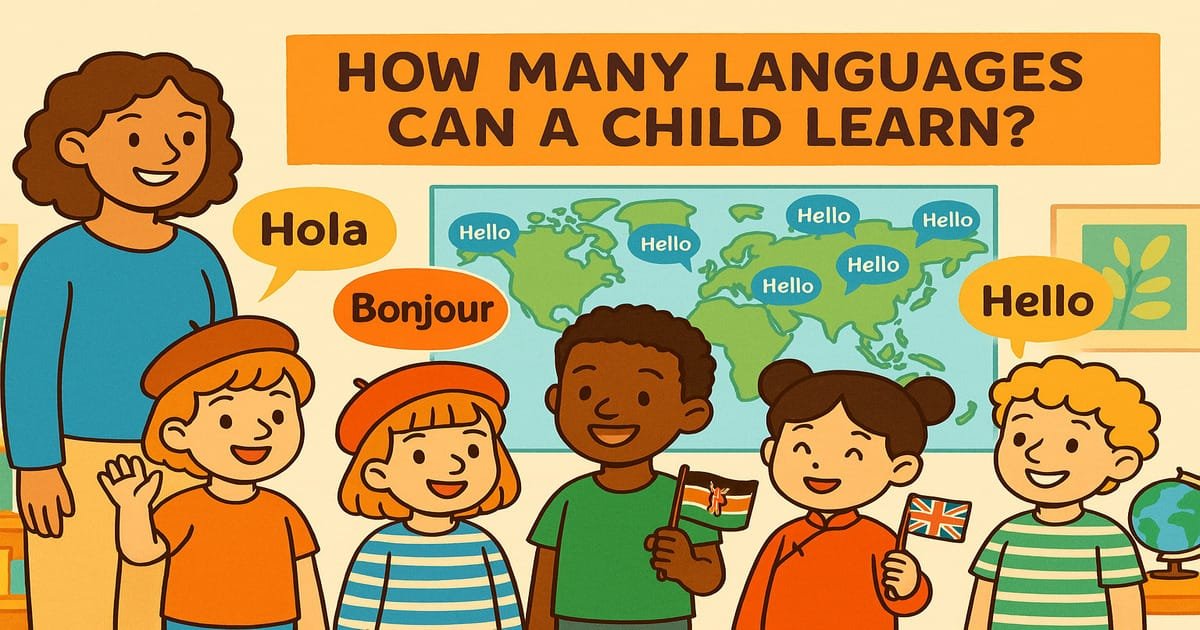Biting is a common behavior in young children that can cause distress to both parents and their little ones, but it’s important to remember that it’s a normal part of childhood development. While this behavior may be challenging, there are effective strategies for preventing and addressing child biting.
Children may bite for various reasons, such as teething, exploration, seeking attention, or expressing frustration. As parents, it’s crucial to understand these underlying factors and respond appropriately to discourage this behavior.
In this article, we will explore how to stop a child from biting and provide effective strategies for child biting prevention. By implementing these techniques, you can create a safe and nurturing environment that fosters positive behavior and eliminates biting habits in your child.
Key Takeaways:
- Understanding the reasons behind child biting behavior is vital in addressing the issue.
- Prevention is key, and techniques such as offering teething toys and ensuring the child’s needs are met can help prevent biting incidents.
- Responding calmly and firmly to biting incidents, without resorting to physical punishment, is essential.
- If biting persists as a habit, seeking professional help may be necessary.
- Creating a supportive environment and teaching children alternative ways to express their emotions can greatly reduce biting behavior.
Understanding the Reasons for Biting
Biting is a common behavior in children, but it can be concerning for parents. To effectively address this behavior, it’s important to understand the reasons behind why children bite. Children may bite for various reasons, including:
- teething: Babies may bite when their gums are sore from teething. The pressure can provide relief and help soothe their discomfort.
- Exploration: Toddlers, in their quest to understand the world around them, may use biting as a way to explore and learn about objects and people.
- Attention-seeking: Some children may resort to biting as a way to grab attention from their parents or caregivers, especially when they feel neglected or overlooked.
- Frustration: When children struggle to express their emotions verbally, biting can become a way to communicate their frustration or anger.
- Assertion: Older children may bite as a means of establishing their boundaries or asserting their independence.
When parents understand the underlying causes of biting behavior, they can respond in a more effective and appropriate manner. By addressing the root cause of the biting, parents can help their child develop alternative ways to express their needs and emotions.
Biting Quotes
“Biting might be a normal part of a child’s development, but it’s important for parents to address it calmly and consistently.” – Dr. Anna Johnson, Child Psychologist
Common Causes of Biting Behavior
| Reasons for Biting | Examples |
|---|---|
| Teething | Infants biting to relieve gum discomfort |
| Exploration | Toddlers biting to understand their surroundings |
| Attention-seeking | Children biting to get the attention of their parents or caregivers |
| Frustration | Children biting when they are unable to articulate their emotions |
| Assertion | Older children biting to establish boundaries or assert their independence |
Prevention Strategies for Biting
Preventing child biting is essential for creating a safe and harmonious environment. By implementing effective strategies, parents can successfully stop children from biting and promote positive behavior. Here are some proven child biting prevention techniques:
- Offer teething rings and cool washcloths: Babies often bite due to teething discomfort. By providing appropriate teething toys and cool washcloths, parents can soothe their baby’s gums and redirect their biting behavior.
- Ensure needs are met before playtime: Hunger, fatigue, or overstimulation can contribute to biting behavior. Parents should ensure their child’s basic needs, such as feeding and rest, are addressed before engaging in playtime activities to minimize the likelihood of biting incidents.
- Teach alternative ways to express frustration or anger: Children may bite as a response to feeling frustrated or angry. Teaching them appropriate ways to express these emotions, such as using words or engaging in physical activities like punching a pillow, can effectively redirect their behavior.
- Provide adequate attention: Children often resort to biting as a means to gain attention. By offering sufficient quality time and attention throughout the day, parents can ensure their child feels heard and valued, reducing the need for attention-seeking behaviors like biting.
- Supervise interactions with other children: Biting incidents commonly occur during social interactions. Close supervision and intervention when necessary can help prevent aggressive behaviors, including biting, and promote positive play experiences.
Creating a safe and supportive environment is crucial in child biting prevention. By implementing these strategies, parents can foster healthy development and minimize biting incidents.
When it comes to addressing child biting behavior, prevention is always the best approach. By being proactive and utilizing effective strategies, parents can significantly reduce biting incidents and promote positive behavior in their children. It’s important to create an environment where children feel safe, understood, and supported. Stay consistent in your approach and seek professional help if needed to ensure your child’s healthy development.
Responding to Biting Incidents
In the event of a biting incident, it is crucial to respond promptly and effectively in order to address the behavior and ensure the well-being of all involved. Knowing how to respond to child biting can help prevent future incidents and promote positive behavior in children.
Addressing the Biting Child
When a child bites, it is important to firmly and calmly let them know that their behavior is not acceptable. Using a gentle yet assertive tone, explain to the child that biting hurts others and is not a kind way to express their feelings. Emphasize the importance of using words instead.
It is crucial not to react with anger or physical punishment, as this can reinforce the child’s behavior or create confusion. Instead, focus on providing clear boundaries and guidance to help them understand the impact of their actions.
Removing the Child from the Situation
After addressing the biting child, it is necessary to remove them from the situation immediately. This not only separates them from the person they bit but also allows them time and space to calm down and reflect on their actions.
Find a quiet and safe area where the child can regain control of their emotions. Offer comfort and support, using soothing words to help them understand that their negative behavior is not a reflection of their worth. Reassure them that they are loved and valued regardless of their mistakes.
Supporting the Child Who Was Bitten
It is equally important to provide support to the child who was bitten. Offer immediate care and attention to their needs, both physically and emotionally. Address any physical injury by cleaning and treating the bite, ensuring their safety and well-being.
Empathize with the child who was bitten, acknowledging their pain and discomfort. Encourage them to express their feelings and reassure them that they are not at fault. This helps build trust and may ease their fears about future interactions.
Seeking Professional Help
If a child continues to display persistent biting behavior despite prevention efforts, it may be necessary to seek professional help. Consulting with a pediatrician, child psychologist, or behavioral specialist can provide valuable insights and guidance in addressing the underlying causes of the biting behavior.
These professionals can offer tailored strategies and interventions based on the child’s specific needs, ensuring a comprehensive approach to addressing the behavior.
Remember, responding to biting incidents with understanding, firmness, and support is crucial for helping children learn appropriate ways to express themselves and interact with others.
Strategies for Addressing Biting Habits
If biting becomes a habit, it is important to address the behavior consistently and take proactive steps to overcome child biting behavior. Creating a plan in collaboration with the child’s teacher or caregiver can yield effective results.
Identifying Triggers and Expressing Emotions
One important strategy is to identify triggers that lead to the biting behavior. Is the child biting when they feel overwhelmed or frustrated? By recognizing these triggers, parents and caregivers can anticipate situations and implement preventive measures.
Moreover, it is crucial to provide alternative ways for the child to express their emotions. Teaching them effective communication skills or offering appropriate toys and activities can redirect their urge to bite.
Rewards and Positive Reinforcement
Rewards and positive reinforcement play a significant role in shaping behavior. By praising and rewarding the child for exhibiting appropriate behaviors, they are more likely to replace biting with more acceptable actions. This not only motivates the child but also reinforces positive habits.
For example, a reward chart or token system can be implemented where the child earns stickers or tokens for refraining from biting. Once they accumulate a certain number of stickers, they can exchange them for a small treat or a special privilege. This encourages consistent progress towards eliminating biting habits.
Patience and Consistency
Changing habits takes time, and it is essential to approach the process with patience and consistency. Consistently addressing biting behaviors and reinforcing positive alternatives will eventually lead to the child overcoming biting habits.
Remember, every child is unique, and what works for one may not work for another. It’s important to adapt strategies to suit the individual needs and temperament of the child.
| Strategies | Benefits |
|---|---|
| Identifying triggers | Helps anticipate biting behavior and implement preventive measures |
| Providing alternative ways to express emotions | Redirects the child’s urge to bite towards more acceptable actions |
| Rewards and positive reinforcement | Motivates the child and reinforces positive behaviors |
| Patience and consistency | Allows time for the child to overcome biting habits |
Strategies for Developmental Milestones
The strategies for addressing biting behavior may vary based on the child’s developmental stage. Understanding and responding to biting based on a child’s development can be crucial in effectively addressing this behavior.
Infants
For infants, clear signals and gentle reminders can help teach them that biting is not acceptable. It’s important to provide alternative teething toys and ensure that their needs are met to minimize frustration.
Toddlers
Toddlers may benefit from alternative ways to express their emotions. Encouraging the use of words and offering distractions or redirection can help them communicate their needs instead of resorting to biting. Visual cues, such as timers to facilitate sharing, can also be helpful in guiding their behavior.
Preschoolers
Preschoolers require a deeper understanding of their emotions and guidance on appropriate ways to communicate and interact with others. Teaching them empathy and problem-solving skills can empower them to express their feelings effectively without resorting to biting.
In summary, addressing child biting based on their developmental milestones requires tailored strategies that promote positive behavior and encourage healthy emotional expression.
Helping Children with Emotional Regulation

Biting in children can often be attributed to emotional challenges or a lack of emotional regulation skills. To address this issue effectively, parents can play a crucial role in supporting their children’s emotional development. By providing them with the necessary tools and guidance, parents can help their children manage their emotions in a more constructive way, reducing the incidence of biting behavior.
One key aspect of supporting emotional regulation in children is acknowledging and validating their feelings. When children feel understood and accepted, they are more likely to express their emotions in healthier ways. Encouraging open communication and actively listening to their concerns can create a safe and supportive environment in which they feel comfortable expressing themselves.
Additionally, providing children with opportunities for active play and stress relief can be instrumental in helping them regulate their emotions. Engaging in physical activities such as running, jumping, or dancing allows children to release pent-up energy and express their emotions in a positive and non-harmful manner.
Teaching children appropriate ways to express their emotions is paramount in addressing biting behavior. Parents can encourage the use of words and provide alternative strategies for coping with frustration, anger, or sadness. This might include deep breathing exercises, counting to ten, or using calming techniques such as listening to soothing music or engaging in mindfulness activities.
By fostering emotional regulation skills in their children, parents are not only addressing the issue of biting but also equipping them with essential life skills. These skills will enable children to navigate through challenging situations and manage their emotions effectively, promoting healthier relationships and overall well-being.
Conclusion
Biting is a common behavior in young children that can be effectively addressed with preventive strategies and appropriate responses. By understanding the reasons behind the biting behavior and providing alternative ways to express emotions, parents can help their child overcome this habit. It is important to respond consistently and seek professional help if the behavior persists. With patience, support, and understanding, parents can guide their child towards positive behavior and ultimately eliminate biting.
To prevent biting, parents should ensure that their child’s teething needs are met by providing appropriate teething toys and gentle remedies for sore gums. Meeting the child’s emotional and physical needs before playtime can also help reduce frustration and prevent biting incidents. Teaching children how to use words to express their feelings can be beneficial in preventing the urge to bite as well.
If a biting incident does occur, parents should respond firmly, letting the child know that biting is not acceptable and can cause harm to others. The child should be removed from the situation and given time to calm down. It is important to avoid using physical punishment or biting the child back, as these actions may reinforce the behavior.
If biting becomes a persistent habit or continues past a certain age, seeking professional help from a pediatrician or child psychologist may be necessary. These professionals can provide specialized guidance and support to address the underlying causes of the biting behavior and develop a tailored plan for prevention and intervention.
FAQ
How can I prevent my child from biting?
To prevent biting, offer teething toys, ensure your child’s needs are met, encourage the use of words to express feelings, and provide enough attention and supervision during playtime.
What should I do if my child bites someone?
Firmly let your child know that biting is not acceptable, explain that it hurts others, remove them from the situation, and give them time to calm down. Avoid biting the child back or using physical punishment.
When should I seek professional help for my child’s biting behavior?
If biting becomes a habit, persists past a certain age, or prevention strategies are not effective, it may be necessary to seek professional help to address the behavior.
How can I address biting habits in my child?
Address biting habits by setting up a meeting with the child’s teacher or caregiver, identifying triggers, providing alternative ways to express emotions, and using rewards and positive reinforcement for appropriate behaviors.





